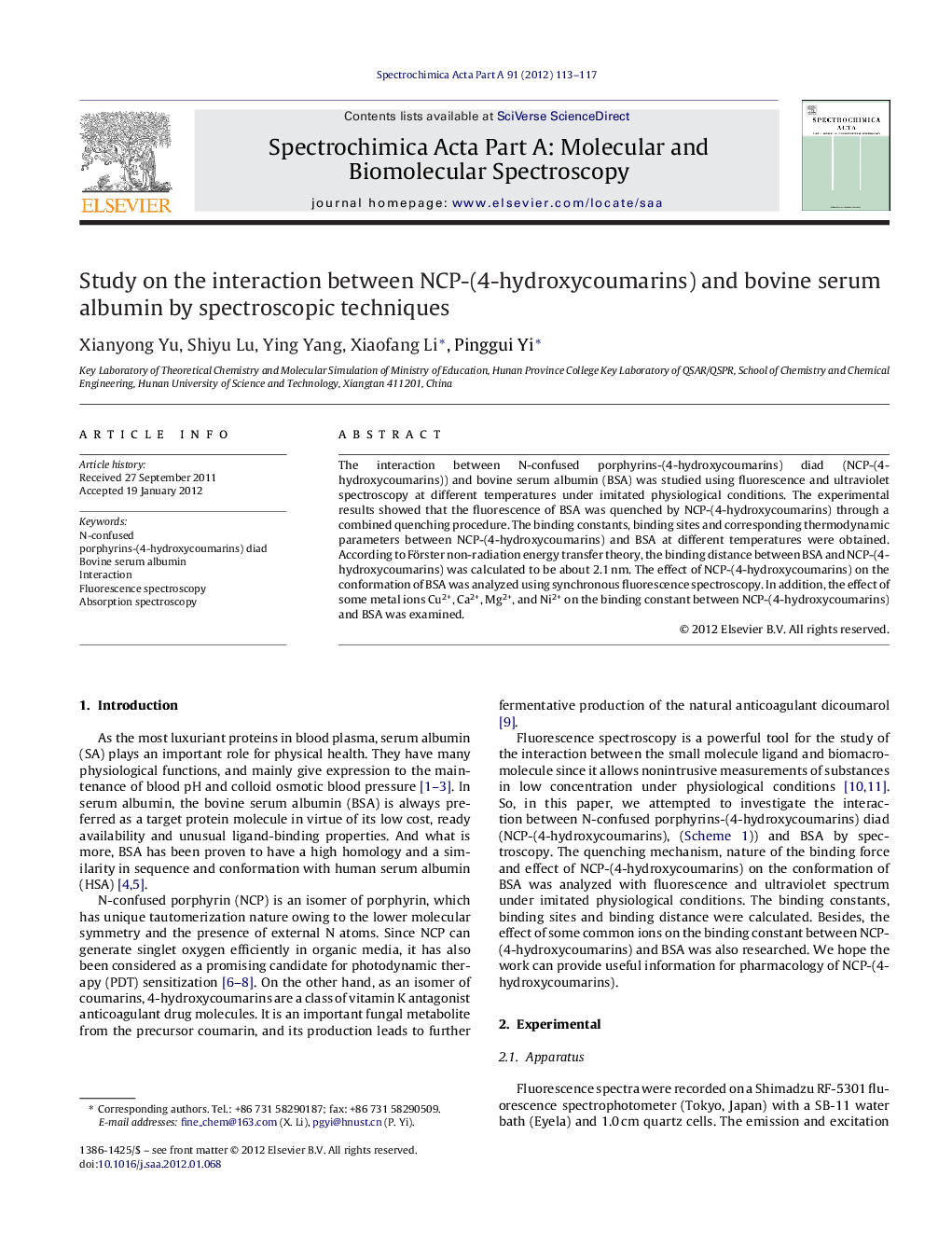| کد مقاله | کد نشریه | سال انتشار | مقاله انگلیسی | نسخه تمام متن |
|---|---|---|---|---|
| 1232992 | 1495277 | 2012 | 5 صفحه PDF | دانلود رایگان |

The interaction between N-confused porphyrins-(4-hydroxycoumarins) diad (NCP-(4-hydroxycoumarins)) and bovine serum albumin (BSA) was studied using fluorescence and ultraviolet spectroscopy at different temperatures under imitated physiological conditions. The experimental results showed that the fluorescence of BSA was quenched by NCP-(4-hydroxycoumarins) through a combined quenching procedure. The binding constants, binding sites and corresponding thermodynamic parameters between NCP-(4-hydroxycoumarins) and BSA at different temperatures were obtained. According to Förster non-radiation energy transfer theory, the binding distance between BSA and NCP-(4-hydroxycoumarins) was calculated to be about 2.1 nm. The effect of NCP-(4-hydroxycoumarins) on the conformation of BSA was analyzed using synchronous fluorescence spectroscopy. In addition, the effect of some metal ions Cu2+, Ca2+, Mg2+, and Ni2+ on the binding constant between NCP-(4-hydroxycoumarins) and BSA was examined.
The interaction between N-confused porphyrins-(4-hydroxycoumarins) diad (NCP-(4-hydroxycoumarins)) and bovine serum albumin (BSA) was studied by fluorescence and UV–vis spectroscopy. The quenching mechanism, binding constants, thermodynamic parameters, and binding distance were obtained.Figure optionsDownload as PowerPoint slideHighlights
► The interaction of BSA and NCP-(4-hydroxycoumarins) was explored.
► The fluorescence quenching mechanism is combined quenching.
► Electrostatic force was the main force for the interaction.
► The binding constants, binding sites and thermodynamic parameters were calculated.
► The conformation of BSA is changed in the presence of NCP-(4-hydroxycoumarins).
Journal: Spectrochimica Acta Part A: Molecular and Biomolecular Spectroscopy - Volume 91, June 2012, Pages 113–117